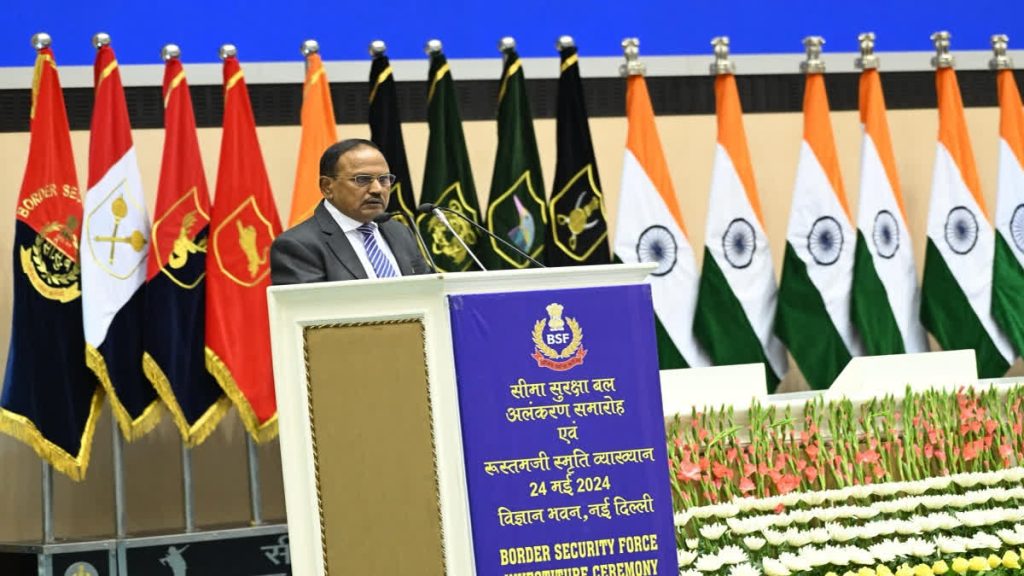Context:
NSA Ajit Doval proposed integrating the Central Armed Police Forces (CAPF) similar to joint theatre commands in the armed forces.
Key Highlights
- Rationale: Integration would not only save money but also ensure homogeneous deployment during both wartime and peacetime.
Comparison with Defence Forces: While defence forces face challenges with different equipment and doctrines, CAPFs share similar roles and equipment.
- For instance, BSF and CRPF have comparable training, equipment, and communication devices, enabling flexible deployment
- Operational Flexibility: In deploying 30 CAPF battalions, BSF or CRPF units can be used interchangeably due to their similar capabilities, enhancing flexibility for border and internal security operations
Composition of CAPFs: It includes:
- BSF (Border Security Force): Primarily deployed along the Pakistan and Bangladesh borders and in Left Wing Extremism (LWE) affected areas since 2009.
- CRPF (Central Reserve Police Force): Deployed for internal security duties, with a large presence in the North East, LWE regions, and Jammu and Kashmir.
- ITBP (Indo Tibetan Border Police Force): Deployed along the China border.
- CISF (Central Industrial Security Force): Guards government installations and is deployed at airports and metro rail.
- SSB (Sashastra Seema Bal): Deployed along the Nepal and Bhutan borders.
- Assam Rifles: Secures the border with Myanmar.
- Additional Forces: The National Disaster Response Force (NDRF) and the National Security Guard (NSG) also derive their strength from the CAPFs.
Challenges in Integration
- Inter-Force Rivalry and Identity: Each CAPF force (CRPF, BSF, CISF, etc.) has its own history, traditions, and culture. Merging them could lead to a loss of identity and morale among personnel.
- Command and Control: Integrating command structures across forces with different operational focuses could create bureaucratic hurdles and slow decision-making.
- Training and Specialization: Each CAPF force specializes in specific areas like border security, internal security, or industrial security. Integration might require extensive retraining to prepare personnel for diverse situations.
- Logistics and Resource Allocation: Integrating forces could present logistical challenges, including unifying equipment, uniforms, and resource allocation across a larger force.
Way Forward
- Joint Training Facilities: Creating specialized CAPF training academies could unify identity, share best practices, and form a versatile personnel pool.
- Standardized Equipment and Logistics: Streamlining procurement and supply chains for equipment, uniforms etc. could result in cost savings and enhanced operational efficiency.
- National Security Task Forces: Creating dedicated inter-CAPF task forces to address specific threats (such as cybersecurity and disaster relief) could enable rapid and coordinated responses.

